Milby Private Hospital
Dr William Mawson purchased a medical practice in Campbelltown in 1910 and was the local doctor until 1931. He also purchased the old Kendall's Mill and miller's residence in 1923. The large mill building and stack were demolished, and the residence altered to become a cottage hospital, known as Milby Private Hospital. For many years it was the only hospital between Liverpool and Goulburn. Although primarily a maternity hospital, it also took other patients. Dr Mawson did much to advance the welfare of Campbelltown during his tenure here and he was very highly regarded for his contribution to the local community. In 1937 Mawson Park was named in honour of Dr. William Mawson in appreciation. The photograph below shows Fisher's Ghost Bridge in southern Queen Street, Campbelltown looking north with "Airds Cottage" on right and the 2-storey "Milby Cottage" in the centre.
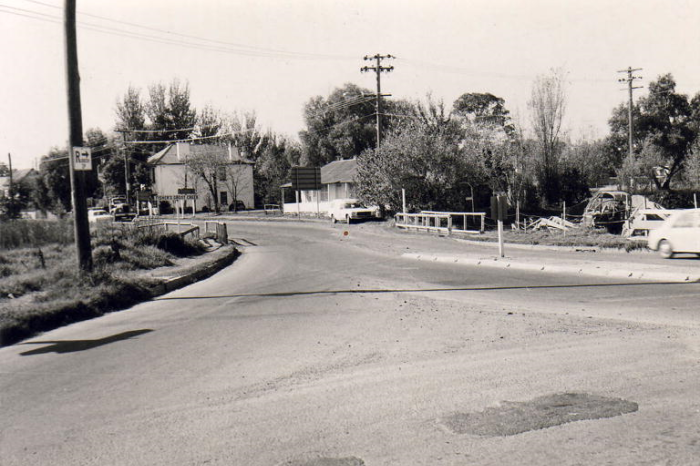
(Image sourced from Steve Roach Collection, Campbelltown City Library)
St Gregory's College
Badgally homestead, was in the 1920s donated to the Marist Brothers who, in 1926, opened a school for boys, calling it St Gregory's College. This original homestead still exists but it can't been seen, because it now forms the internal core of the present college, with large red brick extensions built surrounding it in 1940. This artwork is by Sandy Inglis. (Campbelltown Catholic Club).
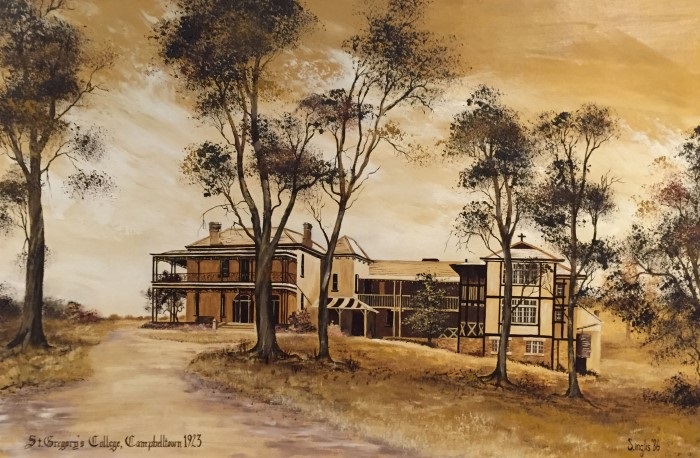
(Image sourced from Campbelltown Catholic Club)
Hurley Park
Hurley Park in 1927, with a group of youngsters playing near the eroded banks of the old Campbelltown water supply, off Allman Street. The reservoir was drained in the 1950s as housing estates went in around it. The landscape changed radically when a playing field was excavated into the hill in the background in the 1960s.
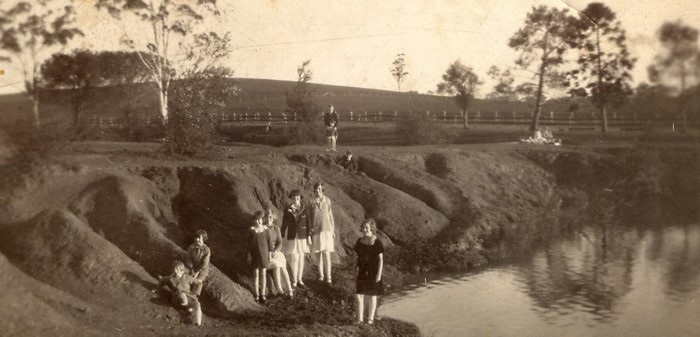
(Image sourced from Walker Family Collection)
Georges River
Young people enjoying a swim on a sandy bank of the Georges River in the 1920s.
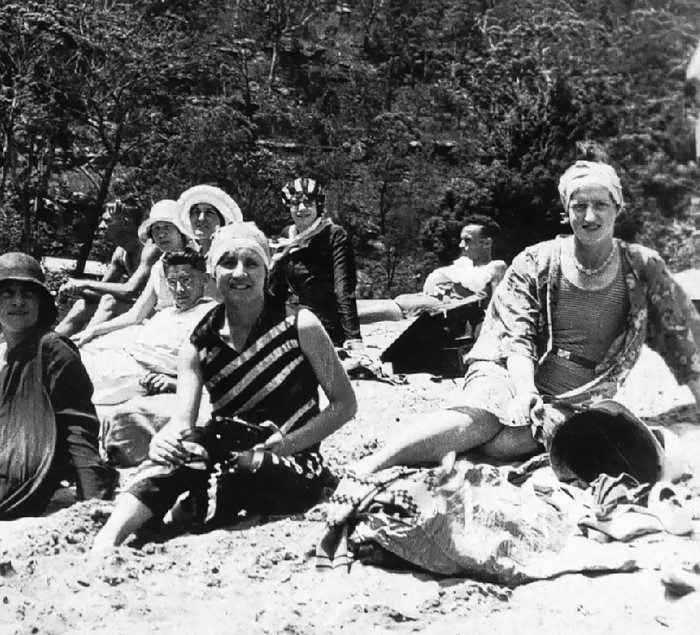
(Sourced from McGill Family Collection)
Macquarie Cinema, from 1926 to 1956 - The entertainment hub of Campbelltown
Queen Street, Campbelltown showing Campbelltown City Council administration building under construction with Mawson Park, Campbelltown Bowling Club, Macquarie Cinema, St. Peter's Anglican Church, Campbelltown Courthouse and "Club Hotel" in background. The Macquarie Cinema was built on the corner of Queen and Browne Street in 1926. Its first double feature was screened in August of that year with a Western and a movie appropriately called "When the Doors Open". The Cinema was built by local Doctor William Mawson largely from the sandstone bricks of the demolished Kendall's Mill. It was purpose-built with auditorium and stage, seating over 450 which rose to 700 with later improvements. At the height of its popularity the Macquarie Cinema showed a newsreel, travelogue, two feature films and sometimes a cartoon, totalling 3 hours of entertainment all for one and nine pence. The decline of the cinema began with the introduction of TV and in 1966 the cinema was sold to "Skatelands" and for a time it became a roller-skating rink run by local bicycle shop owner Jack Hepher. It was eventually demolished in 1979. More stories about Macquarie Cinema.
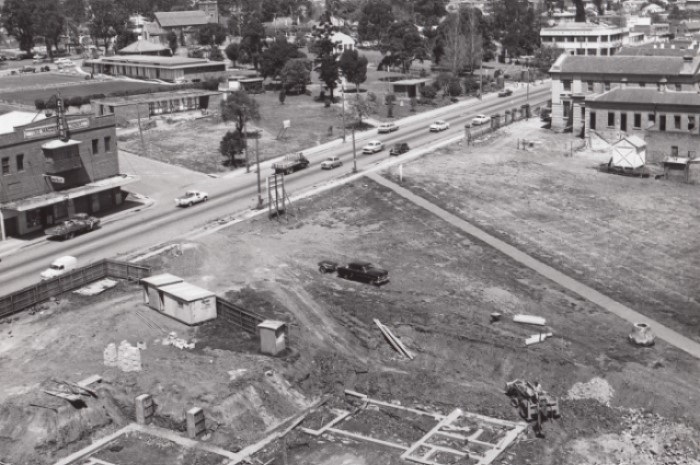
(Image sourced from Geoff Eves Collection Campbelltown City Library)
Hurlstone Agricultural High School
Hurlstone HS was relocated from Ashfield to Glenfield in 1926 with around a 100 students including boarders. The long serving principal was George Longmuir who lead the school from 1917 to 1937.
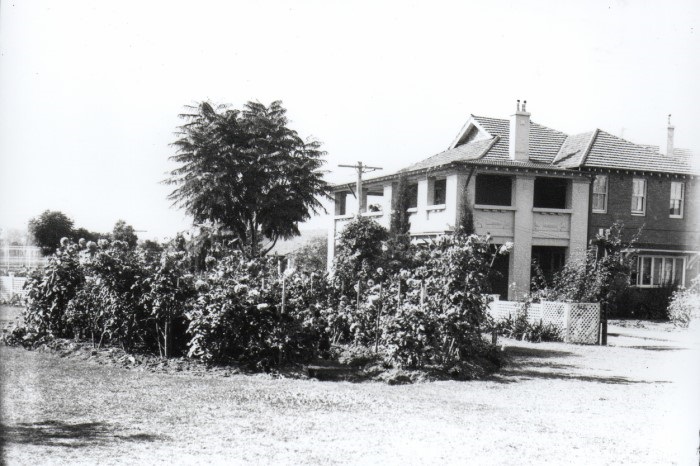
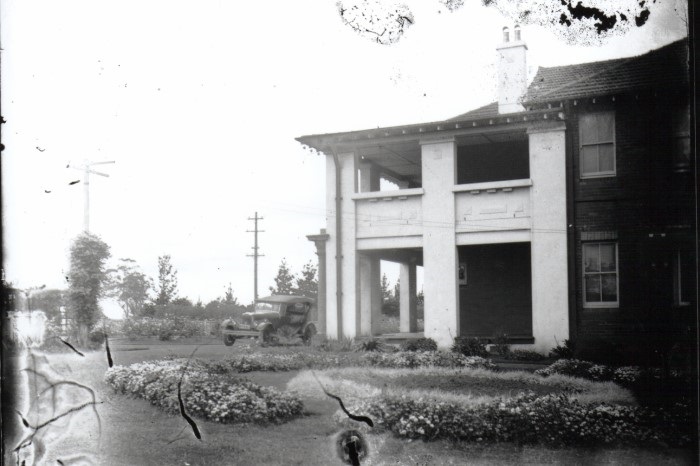
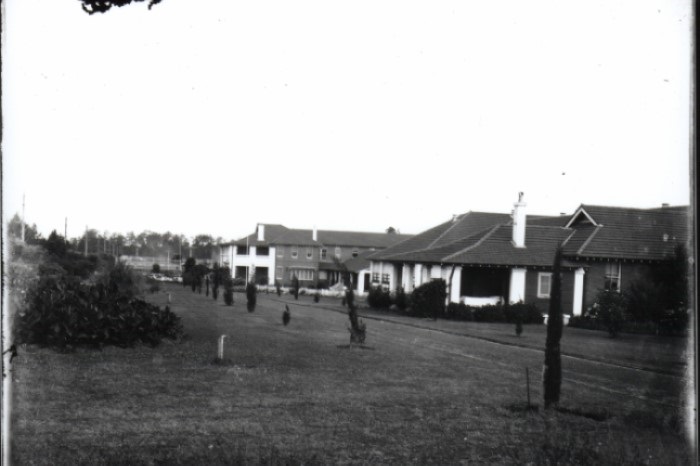
(Image sourced from Glenn Radford, Hurlstone School)